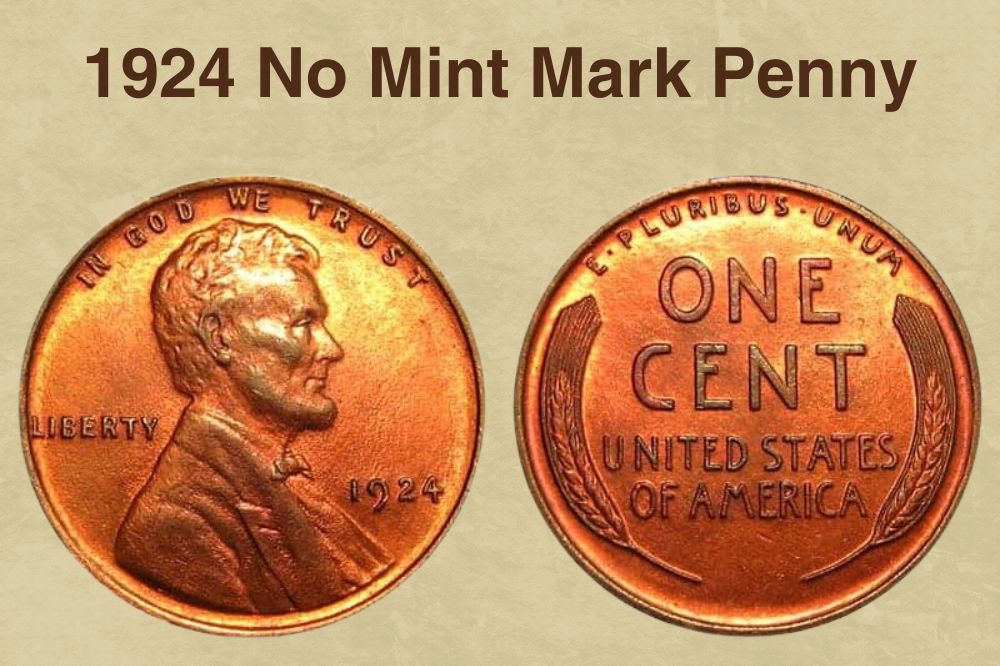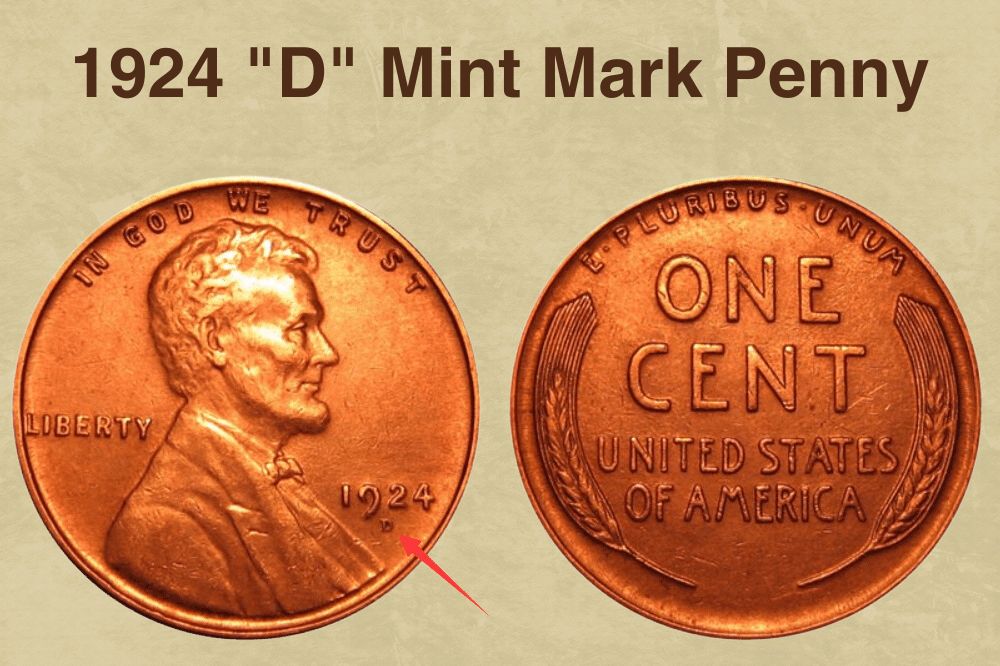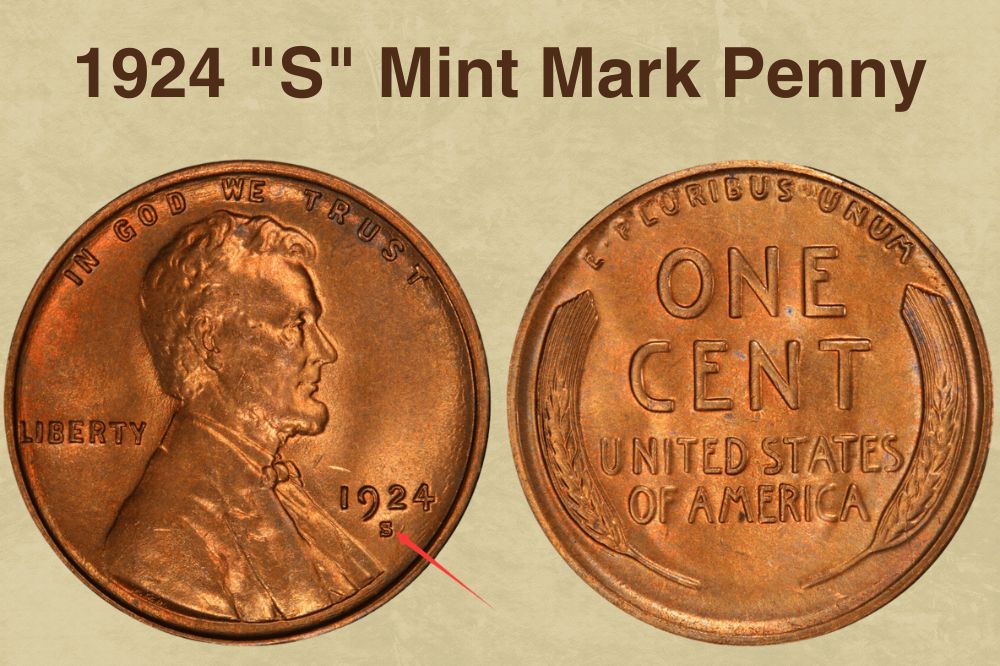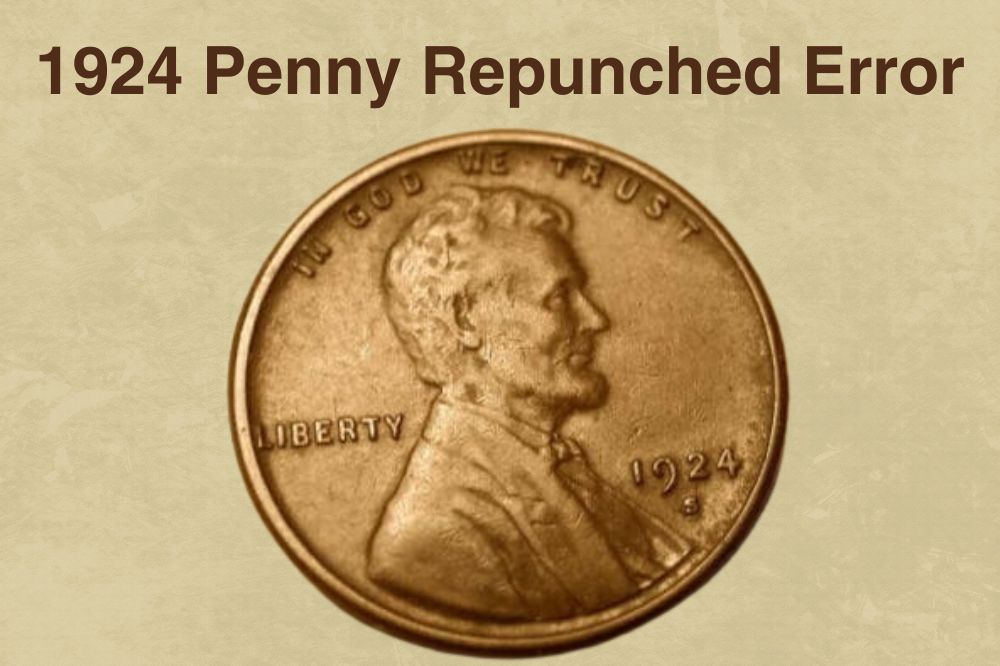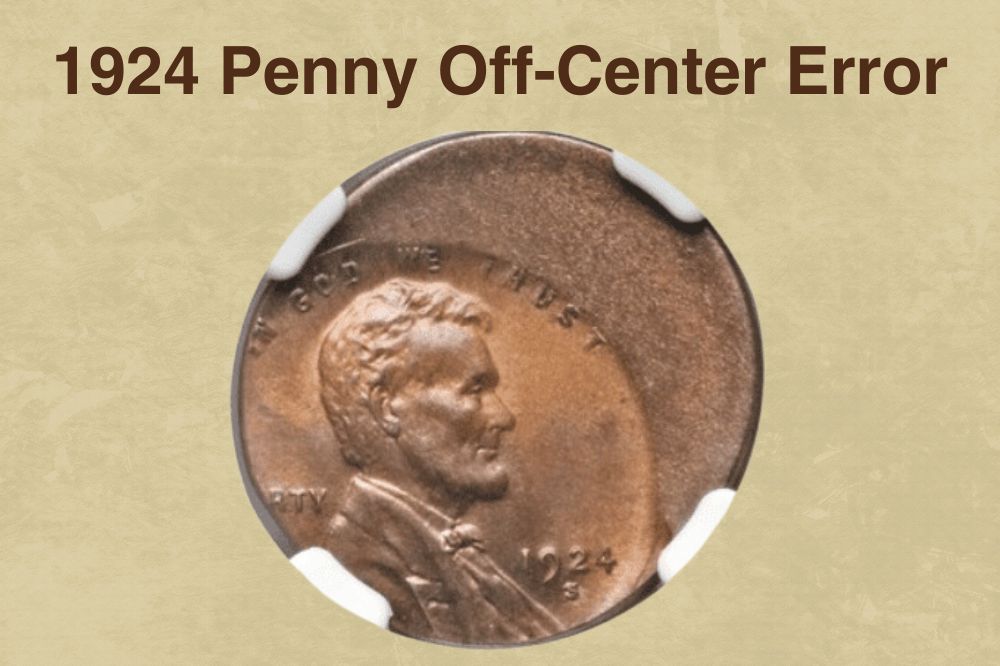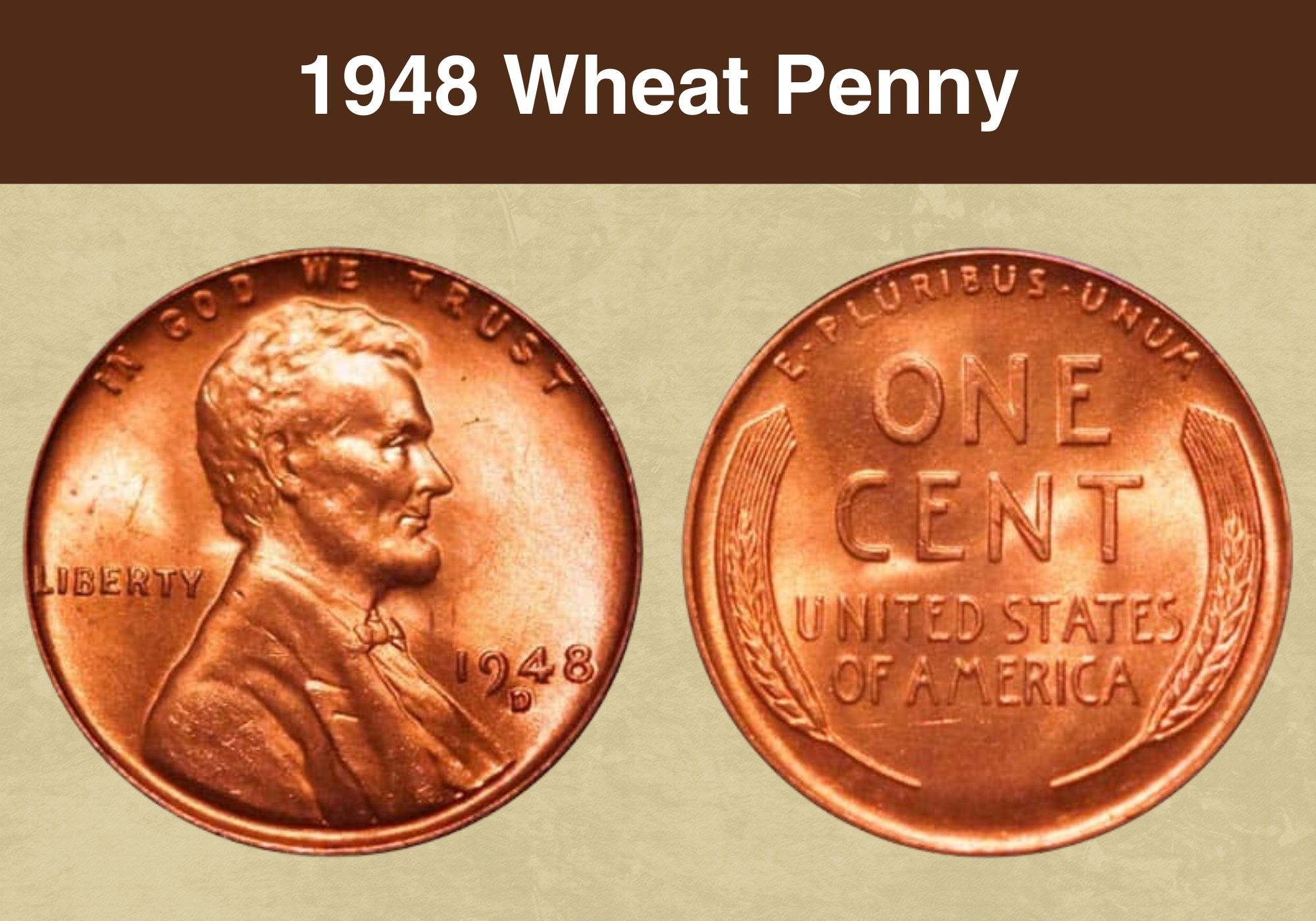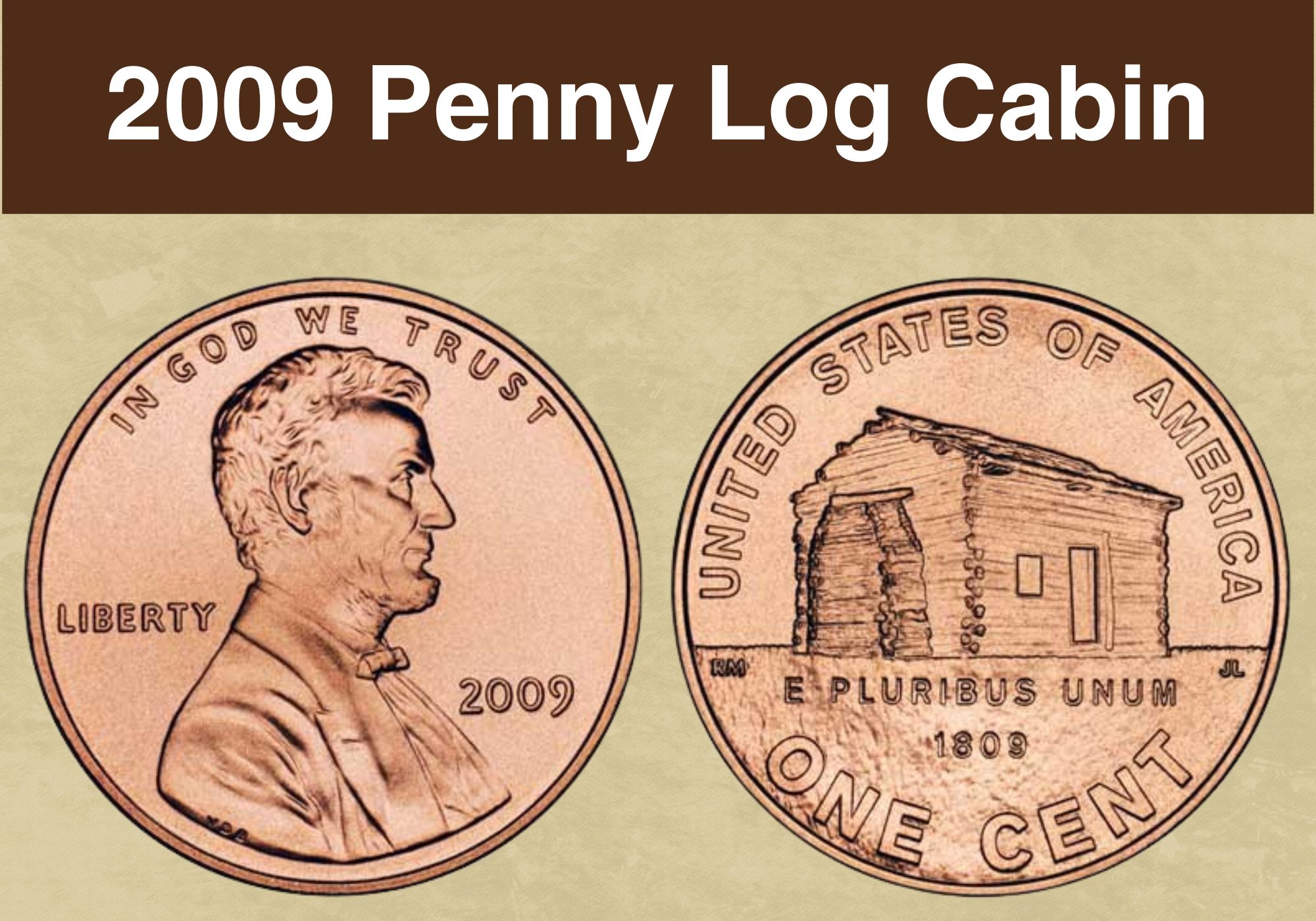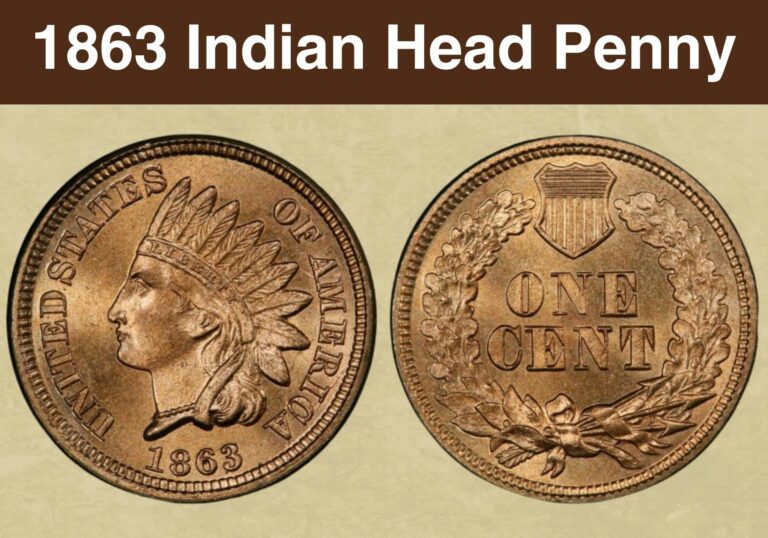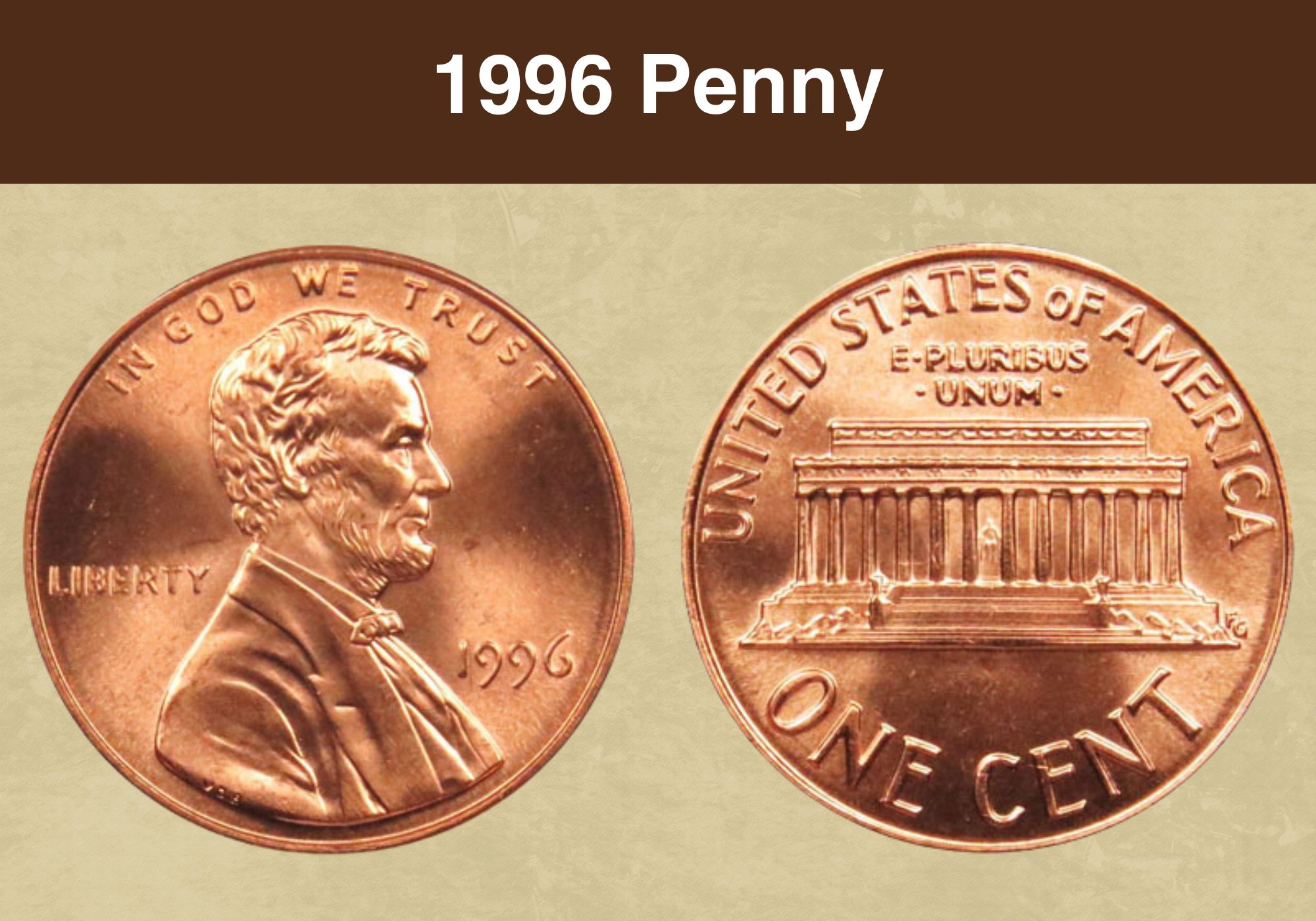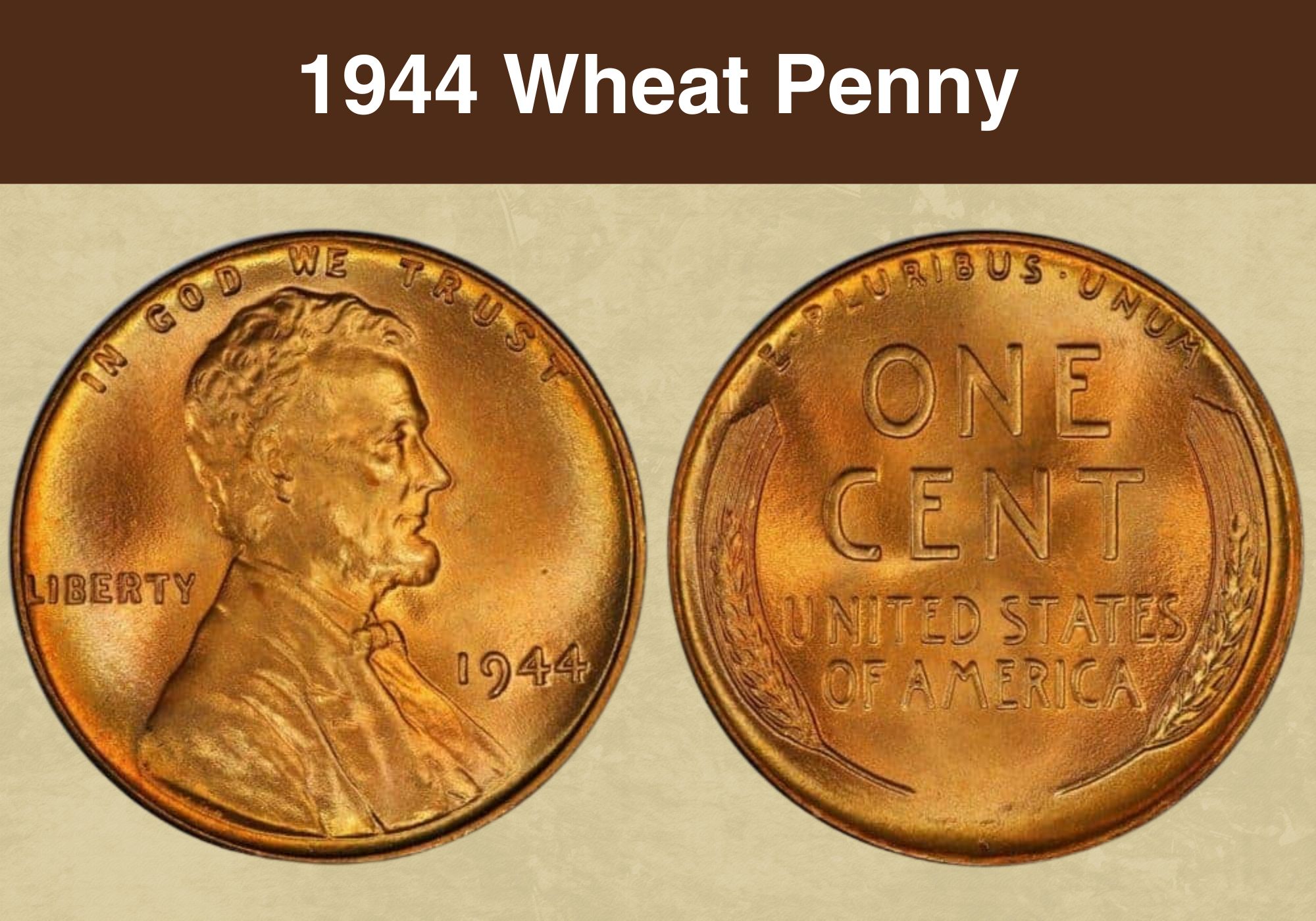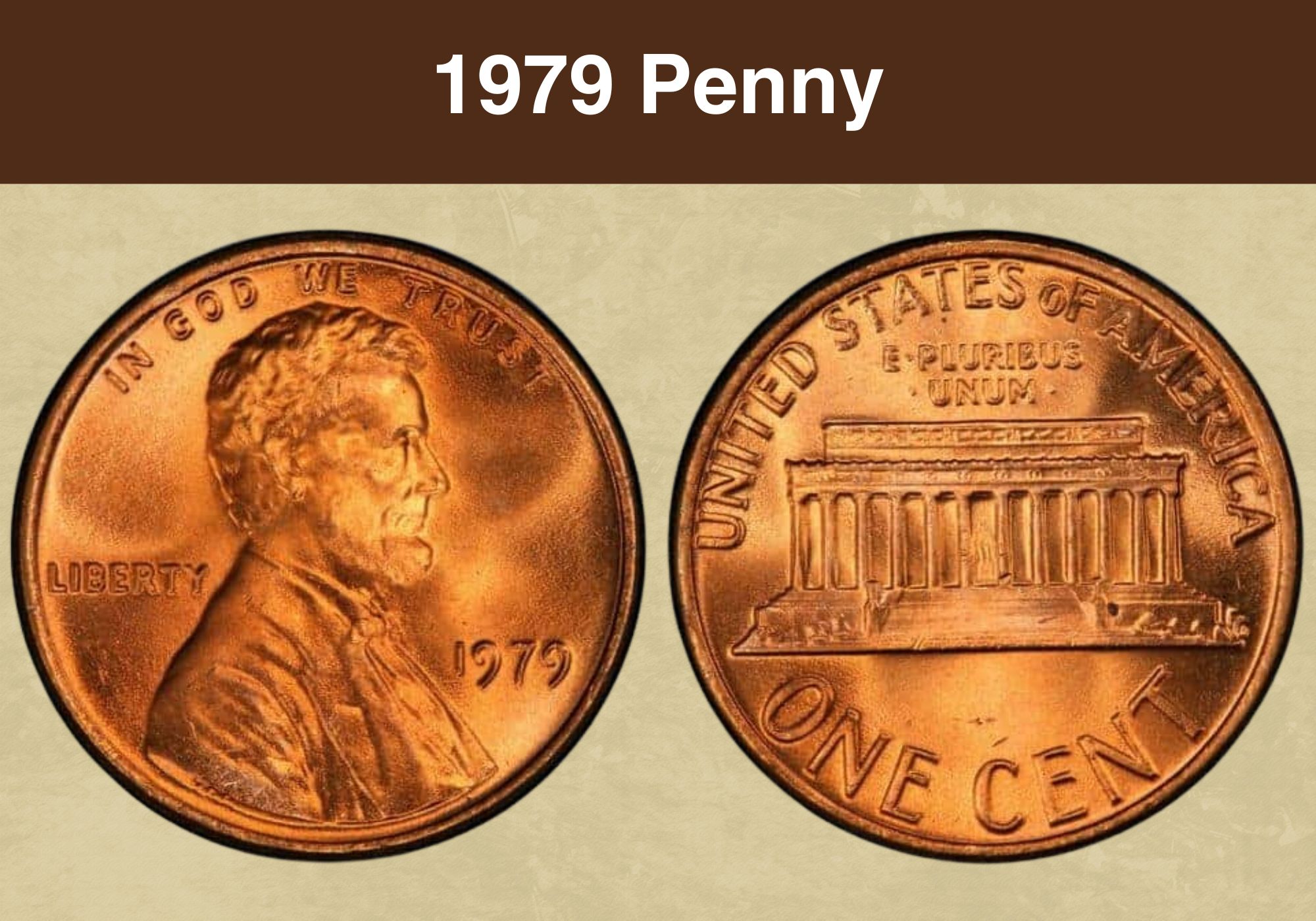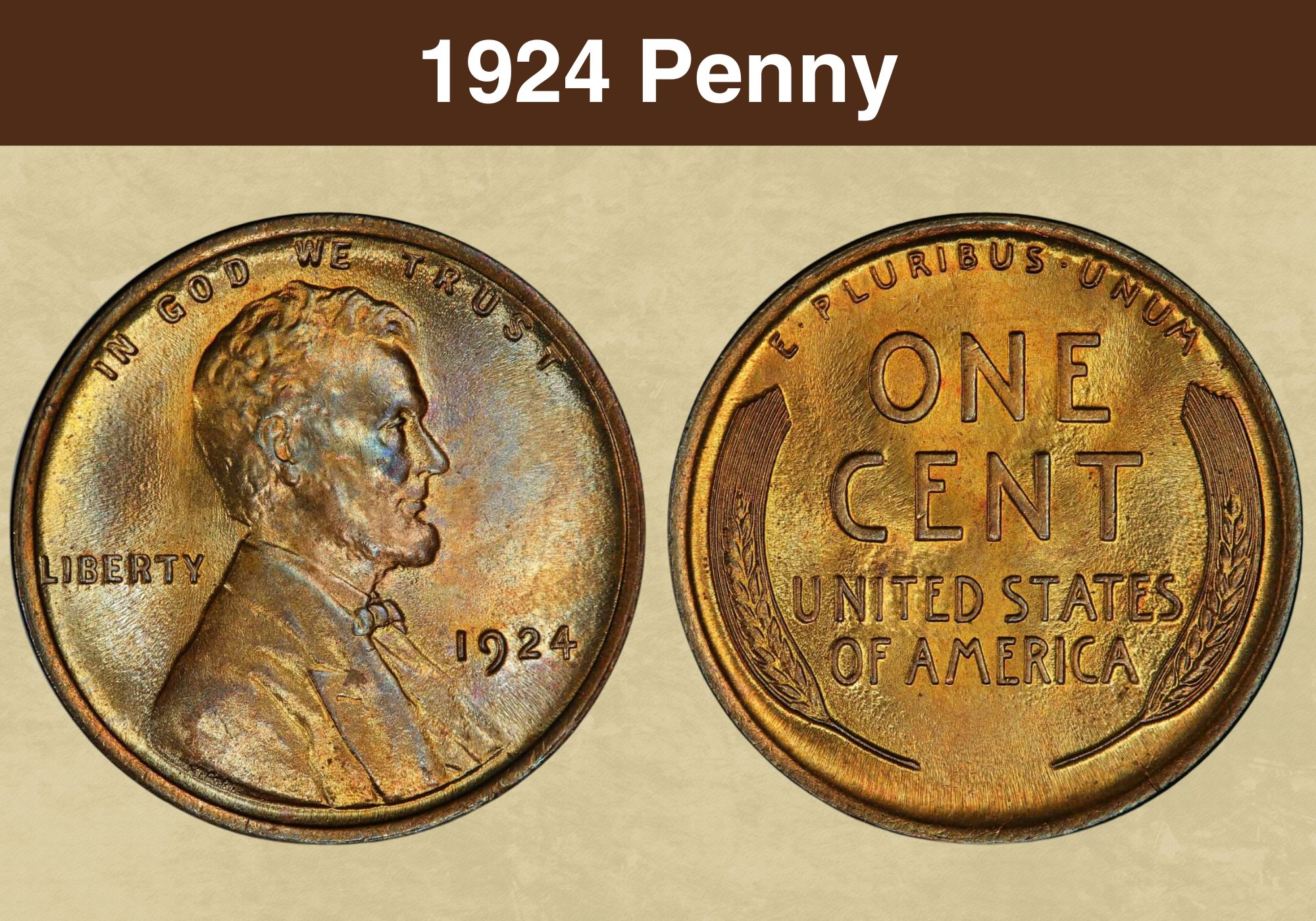
Coin Value Contents Table
A 1924 penny is almost a hundred years old. This explains why even an average-condition 1924 penny is worth 75 cents. Pennies in exceptional condition can even fetch as much as $35,000!
In this post, we’ll explore the different variants of 1924 pennies and their corresponding values. We will also uncover the errors that add to the 1924 penny value.
Let’s get started!
1924 Penny Value Chart |
||||||||
| Mint Mark | Good | MS-61 | MS-62 | MS-63 | MS-65 | MS-66 | MS-67 | Proof Grade |
| 1924 No Mint Mark Penny Value (Philadelphia) | $0.25 | $27 | $32 | $45 | $80 | $180 | – | – |
| 1924 “D” Mint Mark Penny Value | $30 | $320 | $350 | $540 | $1300 | $3000 | – | – |
| 1924 “S” Mint Mark Penny Value | $1.50 | $165 | $200 | $340 | $1600 | – | – | – |
1924 Penny Grading
To figure out the accurate 1924 penny value, it’s essential to know how to grade it. A professional grading service will charge you a basic fee of around $22 – $80 to grade a single coin, excluding the shipping and insurance charges.
Hence, we recommend first evaluating the coin by yourself at home. The process is quite simple. Watch the short video below on how to grade coins at home, and you’ll be able to identify the grade of your coin very much like a professional!
If you feel your 1924 penny is worth a few hundred dollars or more, it’s a good idea to send it for evaluation to PCGS or NGC.
| # | Grade |
|---|---|
| 1 | Basal State-1 |
| 2 | Fair |
| 3 | Very Fair |
| 4, 5, 6 | Good |
| 7, 8, 10 | Very Good |
| 12, 15 | Fine |
| 20, 30 | Very Fine |
| 40 | Extremely Fine |
| 50 | About Uncirculated |
| 60 | Mint State |
| 65 | Mint State |
| 70 | Mint State |
Please check our grading guides to know your coin scale, It’s the necessary step to know the exact value of your coin.
Check out now: How to Grade Lincoln Wheat Penny?
1924 No Mint Mark Penny Value (Philadelphia)
Amongst all three variants of the 1924 penny, the No Mint Mark penny is the most common one. Approximately 75,178,000 units of this penny were minted at the Philadelphia Mint. And so, it’s not a subject of a numismatic prime interest – unless it’s an MS-67 red variant.
Typically, the 1924 No Mint Mark penny is available in three grades with respect to color. These include:
- Brown (represented by BN)
- Red Brown (represented by RB)
- Red (represented by RD)
The brown variants are a lot more common as compared to the other two. And hence, their worth is the lowest of all 1924 pennies. Here’s a glimpse of valuation by fineness:
- Good: 25 cents
- Fine: 75 cents
- Extremely Fine: $6.50
- MS-50 BN: $12
- MS-55 BN: $17.50
- MS-60 BN: $22
- MS-61 BN: $27
- MS-62 BN: $32 – $37
- MS-63 BN: $45 – $55
- MS-64 BN: $65 – $75
- MS-65 BN: $80
- MS-66 BN: $180
The red-brown variants are more valuable than the brown ones. Here’s a glimpse of RB 1924 coin valuation:
- MS-61 RB: $30
- MS-62 RB: $40
- MS-63 RB: $80
- MS-64 RB: $105
- MS-65 RB: $225
- MS-66 RB: $675
The red-brown coins managed to retain bits of their original luster because they weren’t a part of the regular circulation. This explains why there are little to no RB coins available in average condition. It is also worth noting that both brown and red-brown 1924 pennies are not available in proof-grade quality.
As for the red variants, these offer the highest 1924 penny value. These coins exhibit 95% of their original mint color, meaning they have a visible red shine of the copper they constitute. They are not worn out.
There are only a handful of 1924 RD pennies. These are:
- MS-62 RD: $58
- MS-63 RD: $100
- MS-64 RD: $150
- MS-65 RD: $535
- MS-66 RD: $1600
- MS-67 RD: $13500
There’s one MS-67 RD 1924 penny that got auctioned for about $38,238 back in 2006. It’s the finest quality 1924 penny, and hence, holds the highest value.
Overall, each type of 1924 No Mint Mark Philadelphia penny comprises 95% copper and a 5% blend of Tin and Zinc. The weight of the penny is 3.11 grams and its face value is one cent.
If you’ve got a 1924 penny, it’s best to take it to a professional coin expert for accurate grading. And if you want to sell it, take it to a passionate numismatist or someone who knows its true value.
If you sell it to just anyone, you might end up getting a few cents (or even one cent) for a coin that could be worth thousands!
With that said, the 1924 penny features the same legendary design as the 1923 penny. It was originally introduced in 1909 by Victor David Brenner.
The front or obverse side of the coin carries Abraham Lincoln’s portrait. On the left side of the portrait, there’s a text in capitals that reads LIBERTY. And on the right side, you’ll find the year of minting.
In this particular case, there’s a small 1924 printed in front of Lincoln’s portrait. There’s no letter below the year as seen in other variants. What’s more, at the top of Lincoln’s head, you can see the text IN GOD WE TRUST arching upward.
The backside or tail side of the coin features the text ONE CENT at the top center. In the middle center of the coin, there’s another text that reads: UNITED STATES OF AMERICA.
Plus, similar to the front side, there’s a text arching upwards. It reads E Pluribus Unum.
On either side of the coin, there’s a single wheat stalk between the text and the smooth edge. This is why the 1924 penny is also known as the Wheat penny. This design was replaced with Lincoln’s memorial in 1958.
No special events are linked to the coin.
1924 “D” Mint Mark Penny Value
The second variant of the 1924 penny is the D Mint Mark Penny. As the letter suggests, this variant comes from the Denver Mint.
The total quantity of these coins minted at the Denver Mint was about 2,520,000. Evidently, these were produced significantly less than No Mint Mark pennies. And this adds to the D Mint Mark 1924 penny value. Since these are lesser in quantity, they are also relatively rare.
In terms of appearance and composition, these pennies are exactly the same as the 1924 No Mint Mark penny – except that there’s a small D right below the year of minting on the obverse side.
Similar to the No Mint Mark 1924 penny, the red variant of the D Mint Mark penny is the rarest and consequently the most valuable.
Here’s a glimpse of valuation by fineness and color grades:
- MS BN Good (G): $30
- MS BN Very Good (VG): $38
- MS BN Fine (F): $45
- MS BN Very Fine (VF): $65
- MS BN Extremely Fine (XF): $115 – $125
- MS-50 BN: $165
- MS-53 BN: $180 – $190
- MS-55 BN: $230 – $250
- MS-58 BN: $260 – $270
- MS-60 BN: $290
- MS-61 BN: $320 – $335
- MS-62 BN: $350 – $380
- MS-63 BN: $540 – $575
- MS-64 BN: $725 – $850
- MS-65 BN: $1300 – $1550
- MS-66 BN: $3000
Several brown D Mint Mark 1924 pennies, ranging from VG grade to MS-65, have been auctioned to date. The actual auctioned price may be higher or lower than the worth given above. So, you can consider the mentioned dollar amounts as the average worth of the 1924 D Mint Mark penny for each respective grade.
Now, let’s check out the average worth of a red-brown D Mint Mark penny:
- MS-61 RB: $340
- MS-62 RB: $420
- MS-63 RB: $675
- MS-64 RB: $1175
- MS-65 RB: $3400
- MS-66 RB: $6250
Although these are rare and highly valuable, we haven’t yet seen numismatics too passionate to cross $10k or more for possessing this version of the 1924 penny.
The red variant takes the dollar amounts even higher. Here’s a glimpse:
- MS-62 RD: $440
- MS-63 RD: $1100
- MS-64 RD: $2900
- MS-65 RD: $13,000
- MS-66 RD: $70,000
The quantity for each grade of red variant is only a handful. For example, there are only 2 reported and available units of MS-66 RD 1924 penny. Similarly, there are only 18 units of MS-65 RD 1924 penny available.
MS-64 RD is available in the highest quantity, which is about 27 units.
Also read: 13 Most Valuable Wheat Penny Worth Money
1924 “S” Mint Mark Penny Value
Lastly, we have the 1924 penny variant that comes from the San Francisco Mint. It possesses the same design and composition as the No Mint Mark and D Mint Mark penny – except that there’s a tiny S printed on the front side of the coin. It is right below the minting year.
The San Francisco Mint produced 11,696,000 units of these coins. This count is greater than the Denver Mint but still much lesser than the Philadelphia Mint. Hence, it’s safe to say that S Mint Mark 1924 pennies are next to the D Mint Mark pennies when it comes to rarity.
In terms of valuation, here’s an overview of the brown 1924 S Mint Mark penny:
- MS BN Good (G): $1.50
- MS BN Very Good (VG): $2
- MS BN Fine (F): $3.75
- MS BN Very Fine (VF): $24
- MS BN Extremely Fine (XF): $35 – $40
- MS-50 BN: $85
- MS-53 BN: $90
- MS-55 BN: $95
- MS-58 BN: $105 – $115
- MS-60 BN: $125
- MS-61 BN: $165
- MS-62 BN: $200
- MS-63 BN: $340 – $385
- MS-64 BN: $650 – $825
- MS-65 BN: $1600
As for the red-brown 1924 pennies, there are only a few available in the following grades:
- MS-61 RB: $200
- MS-62 RB: $260
- MS-63 RB: $500
- MS-64 RB: $1125
- MS-65 RB: $3950
The reds are super rare for the S Mint Mark 1924 penny. There’s only one MS-65 RD 1924 penny, and its estimated worth is about $29000.
Also read: 12 Most Valuable Lincoln Penny Worth Money
Rare 1924 Penny Error List
The error in a coin significantly increases its worth, especially if it’s a rare error. The following are some rare errors that add to the 1924 penny value.
1924 Penny Double Die Error
A double die error occurs when the design of a coin is stamped with the same design twice, but slightly misaligned, resulting in a doubled image.
This error occurs when the die that impresses the design on the coin has a partial or full doubled impression due to an error in the hubbing process. It gives the coin a unique and rare appearance. Hence, a 1924 double die penny is highly sought after by collectors.
1924 Penny Repunched Error
A repunched error occurs when a die is struck more than once. It results in overlapping images on the coin’s surface.
For a 1924 penny, a repunched or RPM penny error is a rare find. Hence, such a coin can be valued at $75 or above depending on its grade and other aspects.
1924 Penny Off-Center Error
An off-center error occurs when the design of the coin is not centered properly. The higher the percentage of deviation, the higher the 1924 penny value will be.
For example, a 1924 penny with a 15% off-center error would be less valuable as compared to a 1925 penny with a 20% or 30% off-center error.
1924 Penny Thinning Error
A thinning error occurs when the thickness of the coin is not uniform. It causes thin spots and areas on the coin and is a result of improper metal flow during the minting process. Usually, collectors pay a premium price for this type of error.
1924 Penny Cracked Die Error
A cracked die error occurs when the die used to stamp the coin cracks, causing a line or split in the design. Similar to the errors above, this too is a super rare find and should be worth a few hundred dollars!
Also read: 17 Most Valuable Indian Head Penny Worth Money
Where to Sell Your 1924 Penny?
Now that you know the value of your coins, do you know where to sell those coins online easily? Don’t worry, I’ve compiled a list of these sites, including their introduction, pros, and cons.
Check out now: Best Places To Sell Coins Online (Pros & Cons)
1924 Penny Value FAQs
How much is a 1924 penny worth?
A circulated 1924 penny is worth a few cents, usually 10+ cents. But an uncirculated or mint condition 1924 penny could be worth a few thousand dollars, depending on its grade and characteristics.
Is there a proof grade 1924 penny?
Not many! There are only a handful of proof-grade 1924 pennies. About four of them are known to date.
Where is a 1924 penny mint mark?
The mint mark of a 1924 penny is right below the year on the obverse side of the coin. It’s usually a tiny D or S, representing the Denver Mint and San Francisco Mint respectively.
Is a 1924 D penny rare?
Yes! A 1924 D penny is the rarest of all 1924 penny. If you’re looking for the highest value, search for an MS-66 RD 1924 D penny.
Also read: 11 Most Valuable Wheat Penny Errors

